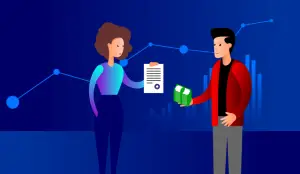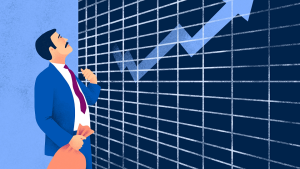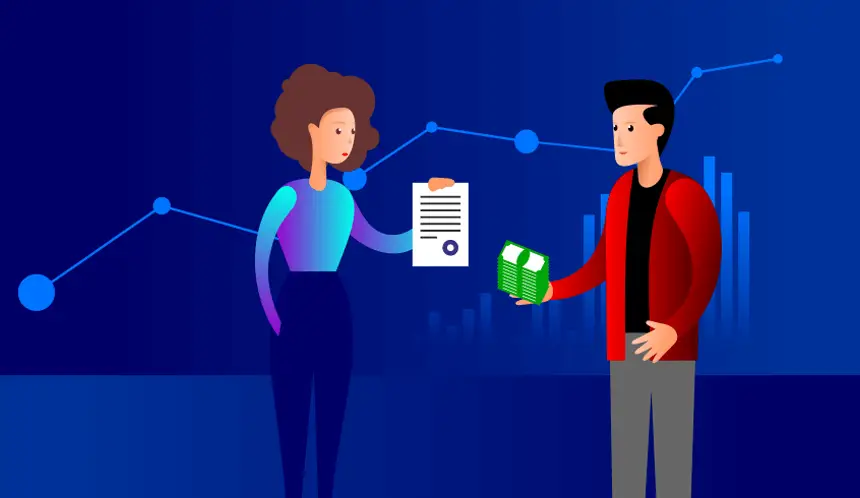In the mid-19th century, American farmers began using futures contracts to fix the price of their crops before harvest. This led to the first contracts, which became the prototype for modern derivatives. Today, they play a central role in financial markets, offering investors flexibility and hedging. Futures are a unique instrument that not only allows you to reduce risk but also generate income during market volatility. They are becoming increasingly popular because they offer the opportunity to make money from both rising and falling asset prices.
What are futures?
Contracts that obligate parties to buy or sell a specific asset at a future date for a pre-agreed amount. For most participants, this instrument does not involve physical delivery of goods, but merely offers the opportunity to profit from fluctuations in the value of the asset. Imagine someone signs a contract to buy oil in three months at the current price. The buyer can either take delivery of the oil in the transaction or, if the price changes, pocket the difference. This makes them particularly popular for investing in commodity, index and currency futures.
Financial instruments can be compared to a lease contract, where the price is fixed in advance as a hedge against possible price increases in the future. This is relevant for companies that want to limit the risks associated with price fluctuations in commodities such as oil and gas.
Types and exchange of futures
 There are several types, which differ depending on the assets over which they are held:
There are several types, which differ depending on the assets over which they are held:
- For oil. Some of the most popular on the market. They allow investors to speculate on price changes in a strategic resource that is vital to the global economy.
- Gas. It is used for hedging and speculation purposes, especially in Europe and the United States, where natural gas plays an important role in the energy sector.
- About the indices. They allow you to profit from changes in the value of groups of shares, such as the S&P 500. This is a great way to invest in an entire economy or sector without buying individual shares.
- For the currency. They offer protection against strong exchange rate fluctuations, which is especially important for companies that trade internationally.
On the stock exchange. They allow investors to speculate on the future prices of individual companies.
The stock exchange plays an important role in ensuring the liquidity and security of transactions. It acts as an intermediary between seller and buyer and guarantees the fulfillment of contractual obligations. This makes the process transparent and reduces the risk of non-fulfilment of obligations.
Futures trading: basic principles and advantages
The main objective of trading is to manage risk and profit from the dynamics of asset prices. Futures are a great tool for investors who want to minimize their losses due to unfavorable changes in commodity or currency prices.
One of the most important advantages is the possibility of hedging, that is, covering your market positions. Imagine an airline that buys fuel futures contracts to protect itself against rising oil prices. Even if rates rise sharply, the company can control costs because it buys fuel at a fixed price.
The accessibility and relatively low entry threshold make the tools interesting for beginners. You don’t need a large capital to start trading: all you need is a deposit equal to a portion of the total contract value.
Futures trading also attracts speculators who profit from short-term price fluctuations. Keep in mind that trading requires analysis and market insight. However, successful traders can make significant profits.
How to make money with futures
Profits can be made using various strategies, including speculation, arbitrage and hedging. Through contracts, investors can bet on future price movements of assets such as oil, gas or currency pairs.
The simplest strategy is to buy or sell a contract depending on the expected price movement. For example, if oil prices are expected to rise, buying contracts on them will yield a profit if the prediction comes true.
Another method is arbitrage. This involves buying and selling the same or similar assets simultaneously on different markets to profit from price differences.
Trading strategies also include hedging, which is particularly popular with large companies. For example, exporters and importers use contracts to protect themselves against unfavorable exchange rate fluctuations.
Risks of commercial contracts
Futures are a risky instrument and a bad price prediction can lead to significant losses. One of the biggest risks is high market volatility, which can cause the direction of the exchange rate to change unexpectedly. There are many cases in history where big players have lost millions of dollars by making incorrect predictions while trying to speculate on changes in commodity prices.
Margin requirements are also dangerous. Because traders use borrowed money to increase their positions, their losses can be significantly greater than their original investment in the event of an unfavorable price movement. Therefore, using delivery commitments requires competent capital management and careful market analysis.
Futures are a good tool for investors
 Futures are a tool for investment and risk management. They require knowledge and training. By using futures contracts, you can protect your business from price fluctuations or profit from changes in the value of assets. By using the right strategies and understanding the risks, you can be successful in this market. It is worth diving deeper into the future and trying your hand at this dynamic field.
Futures are a tool for investment and risk management. They require knowledge and training. By using futures contracts, you can protect your business from price fluctuations or profit from changes in the value of assets. By using the right strategies and understanding the risks, you can be successful in this market. It is worth diving deeper into the future and trying your hand at this dynamic field.
 en
en  ru
ru  de
de  ar
ar  es
es  nl
nl  hi
hi  fr
fr  it
it  pt
pt  el
el 


